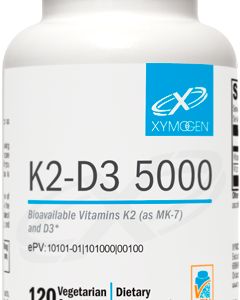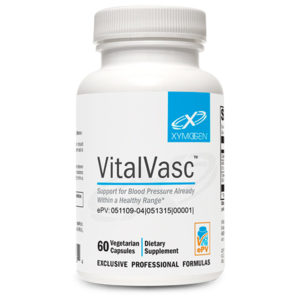Scientific Information/Data
Nitric oxide (NO) is produced by various body cells from the amino acid L-arginine through the enzymatic action of nitric oxide synthase (NOS). NO has critical roles in regulating the function of organs and systems throughout the body. It is well known that NO production by vascular endothelium plays a critical role in blood flow regulation and that the abnormal production of NO can adversely affect blood flow, delivery of nutrients and oxygen, and other vascular functions.
L-Arginine is the principal substrate for the family of NOS enzymes that catalyze the biosynthesis of NO. Some of L-arginine’s benefits include support of immune response, ammonia detoxification, growth hormone secretion (during rest), improved exercise performance (at 6 g/d), wound healing, reduced platelet aggregation, and vasodilation.[1,2] ADMA (asymmetric dimethylarginine) is a newly identified factor confronting cardiovascular health. As an endogenous NOS inhibitor, accumulation of ADMA impairs NO formation by competing with L-arginine for NOS binding. Under these conditions, supplementation with L-arginine may support maintenance of near-normal levels.[1] New research also suggests that ADMA accumulation in oxidized lowdensity lipoproteins (OxLDL) may signal vascular smooth muscle cell (VSMC) migration—which plays a critical role in the etiology of intimal thickening—and L-arginine markedly blocked ADMA-induced VSMC migration.[3]
L-Citrulline is a precursor to L-arginine that readily permeates the intestinal wall and enters the bloodstream. L-citrulline is processed by the kidney, where it is converted to L-arginine; and oral L-citrulline supplementation in humans has been shown to increase plasma L-arginine availability for NO synthesis.[4] In an animal study, oral supplementation with “L-arginine, L-citrulline, and/or antioxidants (vitamins C and E) showed marked support of endothelium-dependent vasorelaxation and blood flow, maintenance of a healthy endothelium, and decrease in superoxide production and oxidation-sensitive gene expression …”[5]
Quercetin A major flavonoid naturally occurring in plants, quercetin has been shown in a study on mice using microarray DNA analyses and pathway analyses to inhibit LPS-induced expression of IL-1beta, IL-1alpha, IL-6, TNF-alpha, IL-12, iNOS, VCAM1, ICAM1, COX2, IL-1RA, TRAF1 and CD40.[6] Experimental models suggest that quercetin prevents the redox imbalance associated with decreased intracellular NO levels and superoxide overproduction, and it prevents the overexpression of inducible NOS (iNOS).[7,8]
Folic Acid Research suggests that homocysteine may decrease the bioavailability of NO.[9] Therefore, folate’s deleterious effect on homocysteine may provide the added benefit of increasing NO levels through enhancing NO bioavailability. Another role of folic acid in NO production relates to tetrahydrobiopterin (THBP, also known as BH4)—an essential cofactor for NOS. Inadequate folate may impair the synthesis of THBP,[10] and 5-MTHF (bioactive folate) may normalize the activity of NOS in THBP-depleted endothelial cells.[11] In a placebocontrolled study of patients receiving 400 mcg/d of folic acid for seven weeks before coronary artery bypass grafting, improved vascular function was observed and attributed to improved availability of THBP for NOS and reduced vascular oxidative stress.[12]
Vitamins C and E Free-radical injury reduces NO availability, and antioxidants appear to preserve NO. In addition, healthy endothelial function is associated with low oxidative stress, particularly decreased superoxide production and reduced oxidized LDL (OxLDL), which, if elevated, can reduce endothelium-derived NO activity. Vitamins C and E administration can reduce both superoxide and OxLDL, thereby improving NO activity.[13] According to Heller et al, “The effect of alphatocopherol seems to be dependent on tissue saturation with ascorbic acid, and both vitamins may act synergistically to provide optimal conditions for endothelial NO formation.”[14]
“More than any other single factor, nitric oxide may be the key to living a longer, healthier life.” – Dr. Louis Ignarro, 1998 Nobel Prize Laureate
*These statements have not been evaluated by the Food and Drug Administration. This product is not intended to diagnose, treat, cure, or prevent any disease.
References
1. Böger RH. The pharmacodynamics of L-arginine. J Nutr. 2007 Jun;137(6 Suppl2):1650S-55S. [PMID: 17513442]
2. Bailey SJ, Winyard PG, Vanhatalo A, et al. Acute L-arginine supplementationreduces the O2 cost of moderate-intensity exercise and enhances highintensity exercise tolerance. J Appl Physiol. 2010 Nov;109(5):1394-403. [PMID:20724562]
3. Sun L, Zhang T, Yu X, et al. Asymmetric dimethylarginine confers the communication between endothelial and smooth muscle cells and leads to VSMC migration through p38 and ERK1/2 signaling cascade. FEBS Lett. 2011 Sep 2;585(17):2727-34. [PMID: 21821030]
4. Sureda A, Cordova A, Ferrer MD, et al. Effects of L-citrulline oral supplementation on polymorphonuclear neutrophils oxidative burst and nitric oxide production after exercise. Free Radic Res. 2009 Sep;43(9):828-35. [PMID:19585317]
5. Hayashi T, Juliet PA, Matsui-Hirai H, et al. l-Citrulline and l-arginine supplementation retards the progression of high-cholesterol-dietinduced atherosclerosis in rabbits. Proc Natl Acad Sci U S A. 2005 Sep 20;102(38):13681-86. [PMID: 16157883]
6. Qureshi AA, Tan X, Reis JC, et al. Inhibition of nitric oxide in LPS-stimulated macrophages of young and senescent mice by delta-tocotrienol and quercetin. Lipids Health Dis. 2011 Dec 20;10(1):239. [Epub ahead of print] [PMID: 22185406]
7. Kostyuk VA, Potapovich AI, Suhan TO, et al. Antioxidant and signal modulation properties of plant polyphenols in controlling vascular inflammation. Eur J Pharmacol. 2011 May 11;658(2-3):248-56. [PMID: 21371465]
8. Zhang ZJ, Cheang LC, Wang MW, et al. Quercetin exerts a neuroprotective effect through inhibition of the iNOS/NO system and pro-inflammation gene expression in PC12 cells and in zebrafish. Int J Mol Med. 2011 Feb;27(2):195- 203. [PMID: 21132259]
9. Tawakol A, Forgione MA, Stuehlinger M, et al. Homocysteine impairs coronary microvascular dilator function in humans. J Am Coll Cardiol. 2002 Sep 18;40(6):1051-58. [PMID: 12354427]
10. Crabtree MJ, Channon KM. Synthesis and recycling of tetrahydrobiopterin in endothelial function and vascular disease. Nitric Oxide. 2011 Aug 1;25(2):81-88. [PMID: 21550412]
11. McCarty MF. Coping with endothelial superoxide: potential complementarity of arginine and high-dose folate. Med Hypotheses. 2004;63(4):709-18. [PMID: 15325022]
12. Shirodaria C, Antoniades C, Lee J, et al. Global improvement of vascular function and redox state with low-dose folic acid: implications for folate therapy in patients with coronary artery disease. Circulation. 2007 May 1;115(17):2262- 70. [PMID: 17420345]
13. Carr A, Frei B. The role of natural antioxidants in preserving the biological activity of endothelium-derived nitric oxide. Free Radic Biol Med. 2000 Jun 15;28(12):1806-14. [PMID: 10946222]
14. Heller R, Werner-Felmayer G, Werner ER. Alpha-Tocopherol and endothelial nitric oxide synthesis. Ann N Y Acad Sci. 2004 Dec;1031:74-85. [PMID: 15753135]







Reviews
There are no reviews yet.